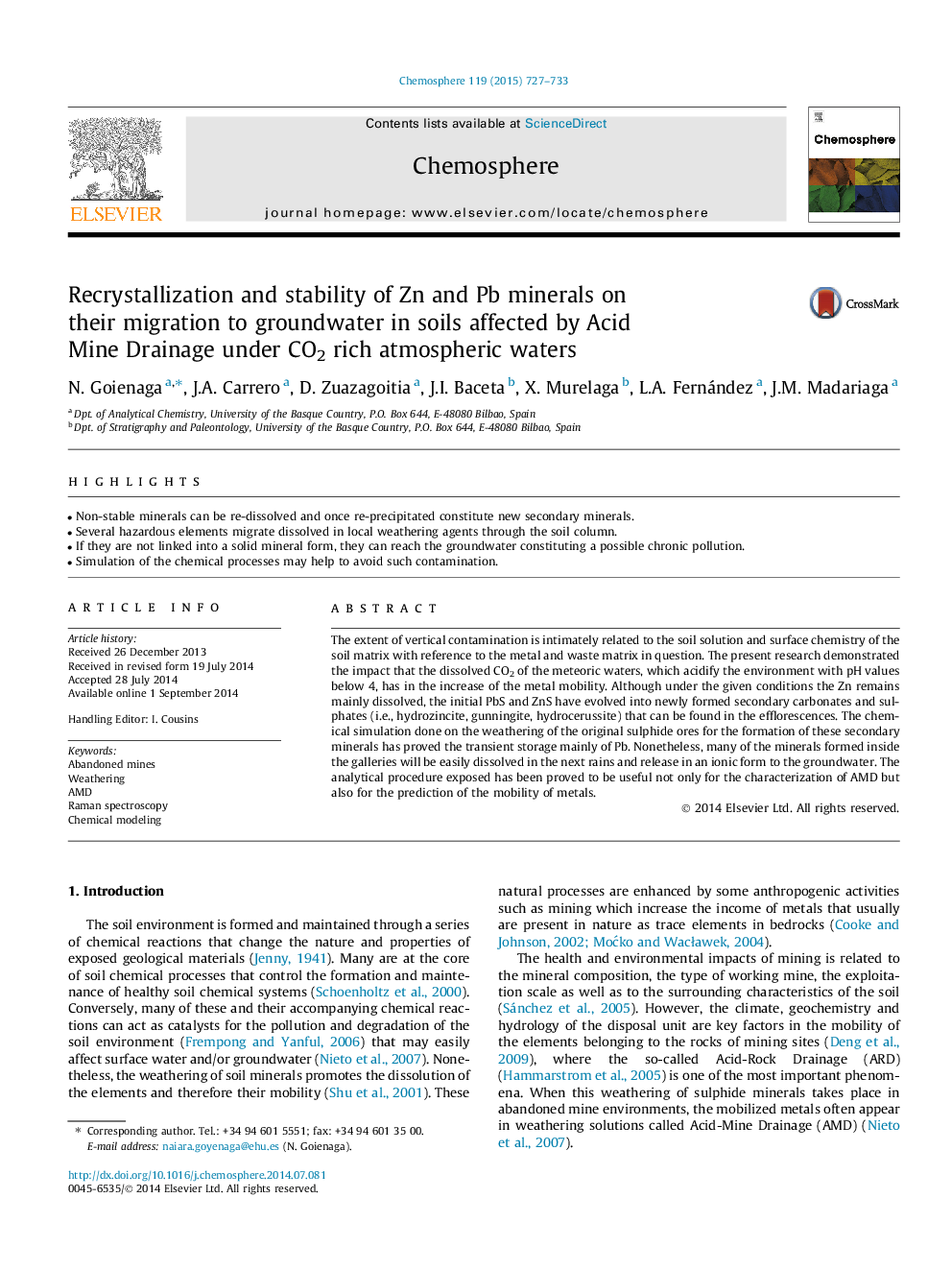| Article ID | Journal | Published Year | Pages | File Type |
|---|---|---|---|---|
| 4408688 | Chemosphere | 2015 | 7 Pages |
•Non-stable minerals can be re-dissolved and once re-precipitated constitute new secondary minerals.•Several hazardous elements migrate dissolved in local weathering agents through the soil column.•If they are not linked into a solid mineral form, they can reach the groundwater constituting a possible chronic pollution.•Simulation of the chemical processes may help to avoid such contamination.
The extent of vertical contamination is intimately related to the soil solution and surface chemistry of the soil matrix with reference to the metal and waste matrix in question. The present research demonstrated the impact that the dissolved CO2 of the meteoric waters, which acidify the environment with pH values below 4, has in the increase of the metal mobility. Although under the given conditions the Zn remains mainly dissolved, the initial PbS and ZnS have evolved into newly formed secondary carbonates and sulphates (i.e., hydrozincite, gunningite, hydrocerussite) that can be found in the efflorescences. The chemical simulation done on the weathering of the original sulphide ores for the formation of these secondary minerals has proved the transient storage mainly of Pb. Nonetheless, many of the minerals formed inside the galleries will be easily dissolved in the next rains and release in an ionic form to the groundwater. The analytical procedure exposed has been proved to be useful not only for the characterization of AMD but also for the prediction of the mobility of metals.
